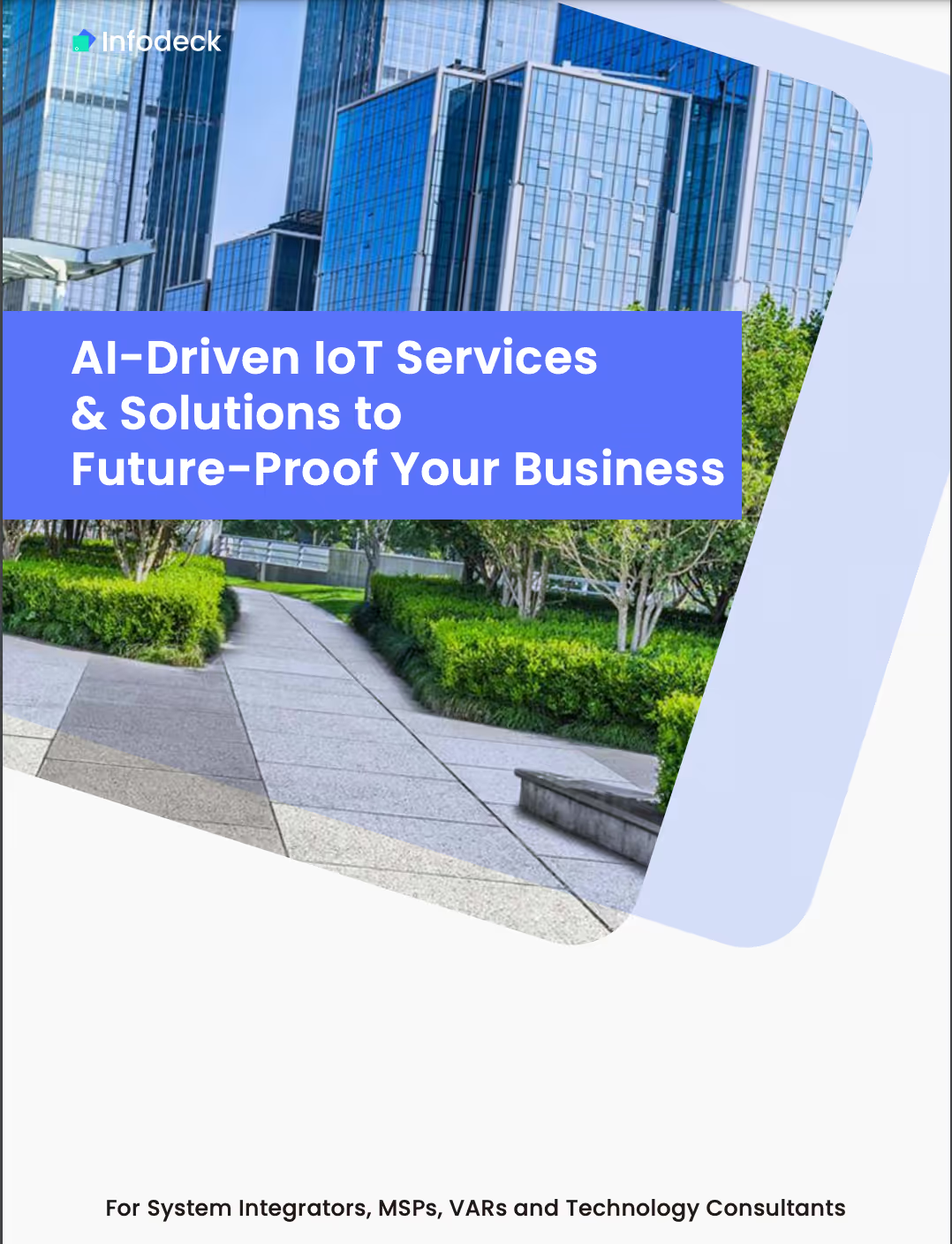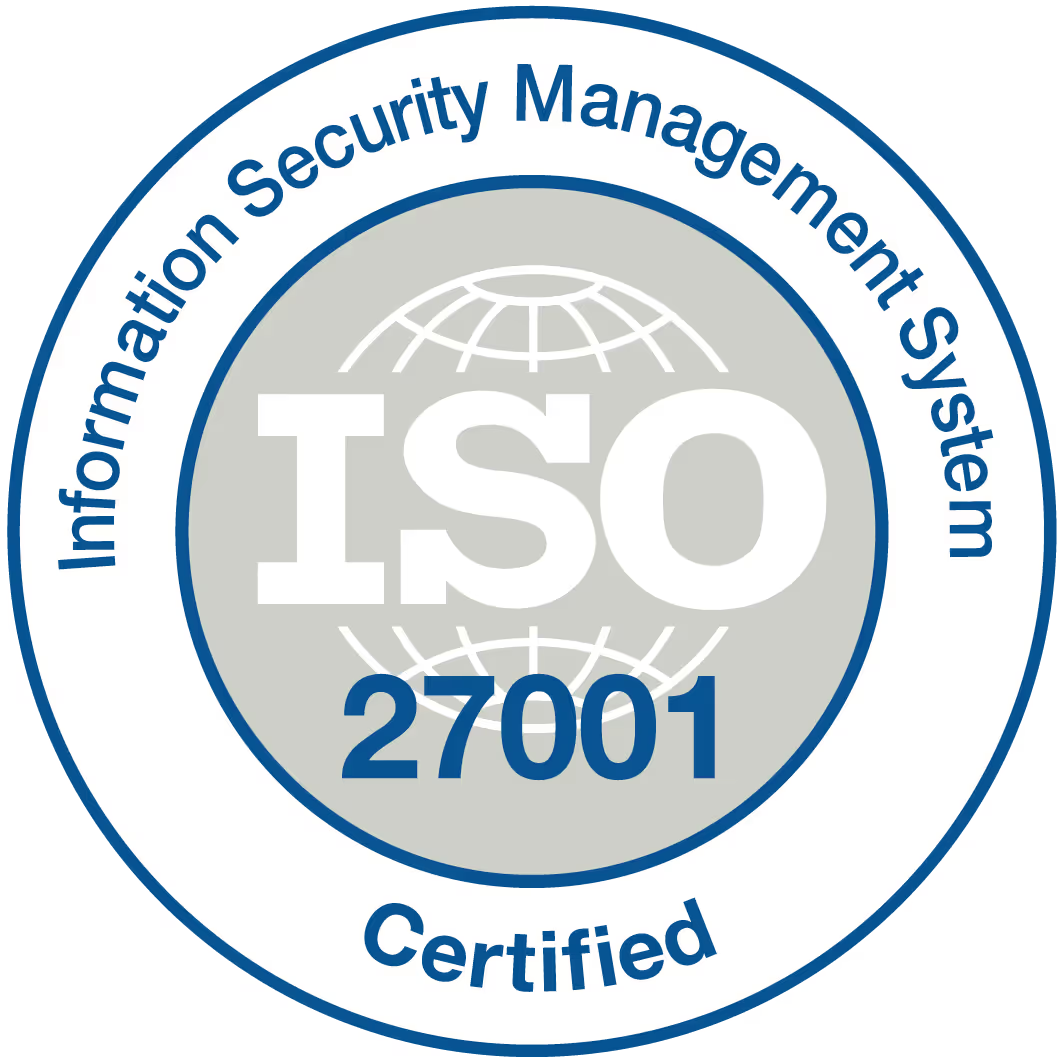
Smart Buildings: Definition and Key Features
Welcome to the era of smart buildings! These smart workplaces and smart homes are revolutionising the way we live, work, and interact with our environment. The connectivity technologies used in these cutting-edge structures are reducing their environmental impact. Smart buildings combine advanced connectivity technologies and infrastructure to create intelligent spaces that enhance efficiency, comfort, and sustainability in workplaces. These buildings leverage assistive technologies and digital twins to optimise their operations and provide a seamless user experience.
Imagine a smart building in the form of a digital twin that leverages automation and IoT to automatically adjust lighting and temperature in smart homes and commercial buildings based on occupancy levels or learns preferences to optimise energy usage in smart workplaces. That's the power of a smart building. By integrating Internet of Things (IoT) devices and sensors in smart homes and smart workplaces, these buildings collect data in real-time, enabling proactive IoT-based maintenance systems, predictive analytics, and personalised experiences for occupants. The connectivity of assistive technologies enhances the overall functionality and efficiency of these spaces.
The benefits of smart buildings are manifold. In both commercial buildings and smart homes, occupants enjoy improved comfort, productivity, and safety. This is also true for smart workplaces, where property insight can lead to reduced operational costs and increased asset value for owners. As a result, the adoption of smart building solutions in commercial buildings and workplaces is rapidly growing across industries worldwide. These applications are driven by the advancements in Commercial IoT technology.
Introduction: Smart buildings and their impact on society
Positive Impact on Energy Consumption and Carbon Emissions
Smart buildings have a significant positive impact on energy consumption and carbon emissions in workplaces. They are especially beneficial in digital applications, for example, in creating energy-efficient and sustainable work environments. By utilising advanced technologies such as sensors, automation systems, and data analytics, smart homes and smart workplaces can optimise energy usage and enhance applications and communication. Smart homes have applications that can automatically adjust lighting, heating, and cooling systems based on occupancy levels and weather conditions. These applications enable communication between the smart home and the building monitor. This results in reduced energy waste and lower carbon emissions in digital applications for the home, thanks to the use of cookies. For example, digital applications in smart lighting systems can detect when a room is unoccupied and use cookies to turn off the lights, conserving energy.
Enhanced Comfort, Safety, and Productivity for Occupants
One of the key benefits of digital smart buildings is the enhanced comfort, safety, and productivity they offer to occupants. These smart buildings utilise advanced technologies and digital systems to optimise various aspects of the building environment. By leveraging digital tools such as sensors, automation, and data analytics, these buildings can monitor and adjust conditions in real-time to ensure optimal comfort levels for occupants. Additionally, digital smart buildings employ sophisticated security systems to enhance safety, using advanced surveillance cameras, access control systems, and alarm systems. Furthermore, these buildings leverage digital technologies to improve productivity by streamlining operations, automating routine tasks, With features like personalised temperature control, automated window shades that adjust based on sunlight intensity, air quality monitoring systems, and digital cookies, occupants can enjoy a comfortable environment tailored to their preferences. Digital smart buildings integrate advanced security measures, including digital facial recognition access control systems and real-time digital surveillance cameras, to guarantee the safety of individuals on the premises.
Potential Cost Savings for Building Owners and Operators
Digital smart buildings also hold the potential for cost savings for building owners and operators. By optimising energy usage through intelligent digital systems that monitor digital consumption patterns in real-time, these digital buildings can significantly reduce digital utility bills. Moreover, digital predictive maintenance enabled by IoT sensors helps identify potential equipment failures before they occur. This proactive approach minimises downtime and reduces maintenance costs. For instance, by using digital data from sensors installed in digital chillers or digital pumps for swimming pools within the building premises, digital operators can detect abnormalities early on and take necessary actions to prevent costly breakdowns.
Contribution to Sustainable Development Goals
Smart buildings play a crucial role in contributing to sustainable development goals. Through their focus on energy efficiency and reduced carbon emissions, these buildings align with global initiatives aimed at combating climate change. Infodeck.io and Smart FM technologies are utilised to optimise energy usage and promote sustainability. These smart buildings in Singapore Green campuses are in line with the Singapore BCA's efforts towards a more sustainable future. They support targets outlined in international agreements such as the Paris Agreement by reducing greenhouse gas emissions associated with traditional building operations.
Better Visibility and Digital Trials of Building Operations and Maintenance
Another advantage of smart buildings is the improved visibility and digital trials of building operations and maintenance. With the help of data analytics platforms, building owners and operators can gain valuable insights into energy consumption patterns, occupancy rates, and equipment performance. This information allows them to make informed decisions regarding energy optimization strategies, space utilisation, and maintenance schedules. For example, by analysing data from smart metres and HVAC systems, operators can identify areas where energy usage can be further optimised.
Better Asset Management within the Building
Smart buildings enable better asset management within the premises. By utilising IoT sensors and connectivity solutions, building owners can monitor the condition of critical assets such as chillers or pumps for swimming pools in real-time. This proactive approach helps detect potential issues early on, allowing for timely repairs or replacements. As a result, costly breakdowns are minimised, extending the lifespan of assets while reducing operational expenses.

The potential of smart buildings for sustainability and efficiency
Smart buildings have the potential to revolutionise the way we live, work, and interact with our environment. By incorporating advanced technologies and connectivity, these intelligent structures offer numerous benefits in terms of sustainability, efficiency, and resource management.
Reduction in Energy Consumption through Optimised Systems
One of the primary advantages of smart buildings is their ability to significantly reduce energy consumption. Through the integration of automated systems and real-time data analysis, smart buildings can optimise energy usage based on occupancy patterns and environmental conditions. This leads to more efficient heating, cooling, lighting, and ventilation systems that adjust according to actual needs rather than operating at a fixed schedule. As a result, energy wastage is minimised while maintaining comfortable indoor environments.
Pros:
- Lower utility bills for building owners.
- Reduced carbon footprint due to decreased energy consumption.
- Improved energy efficiency without compromising occupant comfort.
Cons:
- Initial investment costs for implementing smart systems.
- Potential privacy concerns related to data collection.
Integration of Renewable Energy Sources for Greener Operations
Smart buildings also play a crucial role in promoting sustainability by integrating renewable energy sources into their operations. By harnessing solar power or wind energy through on-site generation or grid connections, these buildings can reduce their reliance on traditional fossil fuel-based electricity grids. This not only reduces greenhouse gas emissions but also contributes towards achieving a greener future with cleaner energy alternatives.
Pros:
- Reduced environmental impact by utilising renewable energy sources.
- Potential cost savings from generating electricity on-site.
- Increased resilience against power outages through decentralised energy generation.
Cons:
- Initial installation costs for renewable energy systems.
- Variability in renewable energy availability depending on location and weather conditions.
Efficient Use of Resources such as Water through Automation
Smart buildings employ automation and monitoring capabilities to ensure the efficient use of resources, including water. By integrating sensors and controls, these buildings can monitor water consumption in real-time, detect leaks or inefficiencies, and optimise water usage accordingly. This not only helps conserve a precious resource but also reduces costs associated with excessive water consumption.
Pros:
- Reduced water wastage and conservation of natural resources.
- Lower utility bills for building owners.
- Early detection of leaks or malfunctions leading to prompt maintenance.
Cons:
- Initial investment costs for installing smart water management systems.
- Potential privacy concerns related to data collection.
Monitoring Capabilities to Identify Areas for Improvement
Smart buildings are equipped with advanced monitoring capabilities that allow continuous tracking of various parameters such as energy usage, indoor air quality, occupancy patterns, and equipment performance. By analysing this data, building managers can identify areas for improvement and implement targeted strategies to enhance efficiency and occupant comfort.
Digitalisation in Building Management: Integrated and Automated Solutions
The digital revolution has transformed various industries, and building management is no exception. With the advent of smart buildings, traditional systems are being replaced with integrated and automated solutions that offer centralised control, real-time monitoring, and proactive maintenance. This section will delve into the key benefits of digitalisation in building management.
Centralised Control Systems for Efficient Management
Gone are the days of manually operating different systems within a building. Smart buildings utilise centralised control systems that allow for efficient management of various functions like HVAC (Heating, Ventilation, and Air Conditioning), lighting, security, and more. These systems provide a user-friendly interface that enables facility managers to monitor and control all aspects of the building from a single platform.
Pros:
- Streamlined operations: Centralised control eliminates the need to navigate through multiple interfaces or physical controls.
- Enhanced energy efficiency: By having complete visibility over different systems, facility managers can optimise energy consumption based on occupancy patterns and environmental conditions.

Automation of HVAC, Lighting, Security, and Other Systems
Digitalization brings automation to various building systems such as HVAC, lighting, security, and more. Through intelligent sensors and actuators connected to the central control system or IoT devices (Internet of Things), these systems can automatically adjust settings based on predefined parameters or real-time data inputs.
Pros:
- Energy savings: Automated HVAC and lighting systems can adapt to occupancy levels or natural light availability to minimise energy waste.
- Improved occupant comfort: Smart thermostats can maintain optimal temperatures while automated lighting adjusts brightness levels based on natural light conditions.
Real-Time Monitoring and Data Analysis for Proactive Maintenance
Smart buildings enable real-time monitoring of critical parameters such as temperature, humidity levels, equipment performance metrics, etc. The collected data is then analysed using advanced algorithms to identify potential issues before they escalate into major problems. This proactive approach allows for timely maintenance interventions, reducing downtime and costly repairs.
Pros:
- Predictive maintenance: By analysing historical data patterns, building management systems can predict when equipment is likely to fail and schedule maintenance accordingly.
- Cost savings: Proactive maintenance helps prevent unexpected breakdowns, minimising repair costs and maximising the lifespan of building assets.
Integration with IoT Devices to Enhance Functionality
The integration of smart buildings with IoT devices amplifies their functionality. These devices include sensors, metres, occupancy detectors, and more that collect real-time data from various sources. The data is then processed and utilised by the central control system to optimise operations further.
Pros:
- Increased efficiency: Real-time data from IoT devices enables dynamic adjustments in response to changing conditions.
- Customisation: Integration with IoT devices allows for personalised settings based on individual preferences or specific requirements.
Industrial Protocols Integration with Infodeck.io EdgeGO Edge Computing
Infodeck.io's EdgeGO edge computing platform offers seamless integration of industrial protocols into smart buildings.
Addressing inefficiency through smart technology
In today's rapidly evolving world, the integration of smart technologies has revolutionised various industries, including building management. With the advent of smart buildings, there are numerous benefits that can be harnessed to address inefficiencies and optimise resource utilisation. Let's explore some key ways in which these technologies are making a significant impact.
Identification of energy wastage through advanced analytics
One of the primary advantages of smart buildings is their ability to identify and address energy wastage through advanced analytics. By leveraging connectivity technologies and artificial intelligence (AI), buildings can automate processes and monitor energy consumption patterns in real-time through the Internet of Things (IoT). This allows them to detect areas where efficiency can be improved and optimise resource usage. For instance, sensors installed throughout the building collect data on lighting usage, HVAC systems, and other appliances. This data is then analysed using machine learning algorithms to identify potential sources of energy wastage. By pinpointing these areas, building managers can take proactive steps to optimise energy usage and reduce costs.
Optimisation of space utilisation through occupancy sensors
Another way in which smart technologies enhance building efficiency is by optimising space utilisation through occupancy sensors. These sensors detect human presence in different areas of the building and provide real-time data on space occupancy. Armed with this information, building managers can make informed decisions about space allocation and ensure that resources are used effectively. For example, if certain areas are consistently underutilised while others are overcrowded, adjustments can be made to maximise productivity and comfort for occupants.
Intelligent scheduling to minimise idle time or overuse
Smart buildings also leverage intelligent scheduling systems to minimise idle time or overuse of facilities within the premises. Through automation and AI-driven algorithms, buildings can optimise schedules for various activities such as meetings, room bookings, maintenance tasks, and more. By efficiently managing these schedules based on actual demand rather than relying on manual input alone, unnecessary downtime or conflicts can be minimised. This not only improves operational efficiency but also enhances user experience by ensuring that resources are readily available when needed.
Remote access/control options reducing unnecessary travel
With the advent of smart building technologies, remote access and control options have become increasingly prevalent. This feature allows building managers to monitor and manage various aspects of the building's operations from a centralised location, reducing the need for unnecessary travel. For example, through Smart Facility Management (FM) systems and IoT sensors, managers can remotely adjust temperature settings, monitor energy usage, and even troubleshoot issues without physically being present on-site. This not only saves time but also reduces carbon emissions associated with commuting.

Promoting sustainable solutions to combat climate change
Use of Green Materials During Construction Phase
One of the key aspects of creating smart buildings is promoting sustainable solutions that combat climate change. This starts right from the construction phase by prioritising the use of green materials. These materials are environmentally friendly and have a lower carbon footprint compared to traditional building materials. By incorporating green materials such as recycled steel, bamboo, or reclaimed wood, we can significantly reduce the environmental impact of construction.
implementation challenges of Waste Management Strategies Within the Building
To further enhance sustainability, smart buildings also focus on implementing effective waste management strategies within their premises. This involves adopting practices like recycling and composting to minimise waste generation and divert it from landfills. By properly segregating waste and providing designated recycling areas within the building, we can contribute to reducing our overall environmental footprint.
Adoption of Eco-Friendly Practices Like Rainwater Harvesting
Smart buildings also prioritise eco-friendly practices such as rainwater harvesting. Instead of relying solely on municipal water supplies, these buildings collect rainwater for various purposes like irrigation or flushing toilets. This not only conserves water but also reduces strain on local water resources. By installing efficient plumbing fixtures and using sensors to monitor water usage, smart buildings can further optimise their water consumption.
Encouraging Alternative Transportation Methods
Another crucial aspect of promoting sustainability in smart buildings is encouraging alternative transportation methods. This includes providing amenities such as secure bicycle parking spaces and shower facilities for those who choose to commute by bike or walk. Smart buildings can incentivise carpooling or provide electric vehicle charging stations to promote greener modes of transportation.
By adopting these sustainable practices in smart building design and operations, we can make a significant positive impact on the environment while simultaneously improving air quality and comfort for occupants.
For example:
- The use of green materials during construction helps reduce greenhouse gas emissions associated with traditional building materials.
- Implementing waste management strategies within the building helps reduce the amount of waste sent to landfills and promotes recycling.
- Rainwater harvesting reduces reliance on municipal water supplies and conserves water resources.
- Encouraging alternative transportation methods reduces carbon emissions from vehicles and promotes healthier commuting options.
Smart buildings play a vital role in creating a more sustainable future. By prioritising environmentally friendly practices, we can minimise our impact on the environment while providing comfortable and efficient spaces for people to live and work in.
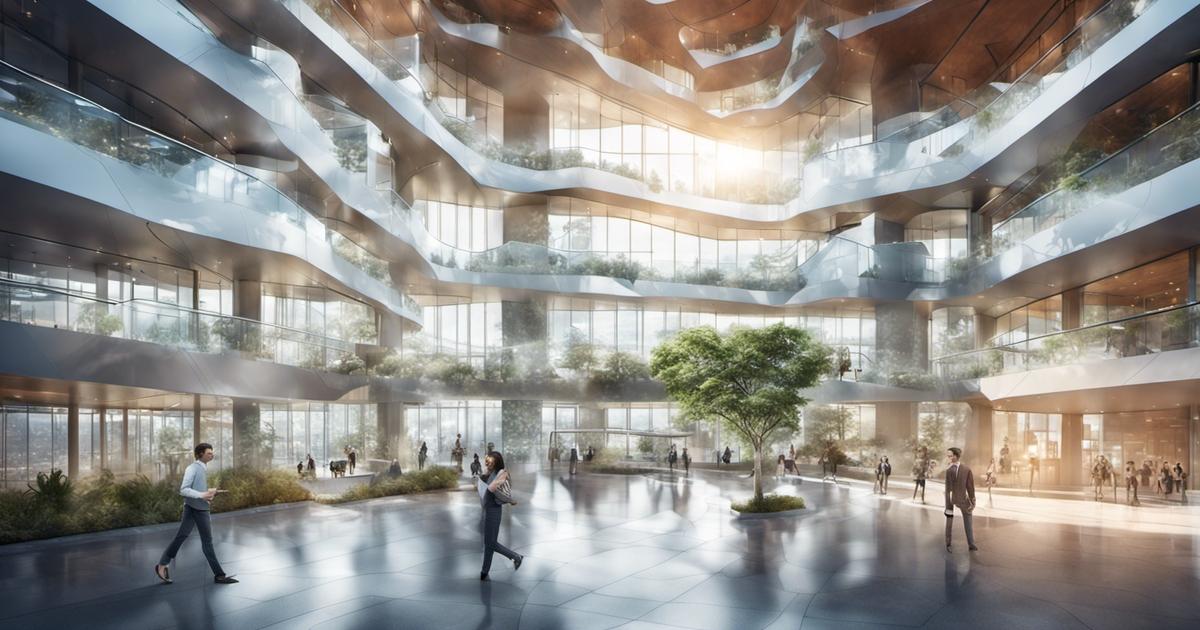
Smart Building Services and Tools: Benefits and Steps Towards Smart Buildings
Let's dive in!
Improved occupant experience with personalised services
Smart building technologies offer numerous benefits that enhance the overall occupant experience. By leveraging digital tools and IoT sensors, buildings can be equipped with personalised services tailored to individual preferences. For example, occupants can have control over lighting, temperature, and even access to amenities through their smartphones or voice commands. This level of customization creates a more comfortable and convenient environment for everyone.
Streamlined facility management processes with digital tools and IoT sensors
One of the key advantages of smart buildings is the ability to streamline facility management processes. Digital tools and IoT sensors enable real-time monitoring of various systems such as HVAC, lighting, security, and energy consumption. Facility managers can remotely access data analytics platforms to make informed decisions regarding maintenance schedules, energy efficiency improvements, and resource allocation. This not only improves operational efficiency but also reduces costs associated with manual monitoring.
Enhanced security measures using advanced technologies
Security is a top priority for any building owner or manager. Smart buildings leverage advanced technologies such as facial recognition systems, biometric access controls, and video surveillance to enhance security measures. These technologies help prevent unauthorised access, detect potential threats in real-time, and ensure a safe environment for occupants. Integrated alarm systems can automatically notify security personnel or emergency services in case of emergencies.
Step-by-step guide towards implementing a smart building solution
Implementing a smart building solution may seem daunting at first glance but breaking it down into manageable steps can simplify the process:
- Assess your needs: Identify the specific areas where you want to implement smart technologies based on your goals (e.g., energy efficiency, occupant comfort).
- Research and select smart building tools: Explore different service providers and tools available in the market. Consider factors such as compatibility, scalability, and cost-effectiveness.
- Plan the implementation: Create a detailed plan outlining the timeline, budget, and resources required for the project. Collaborate with stakeholders to ensure alignment.
- Install necessary infrastructure: Set up the required infrastructure, including IoT sensors, connectivity solutions, and data analytics platforms.
- Integrate systems: Connect various building systems (e.g., HVAC, lighting) to a centralised platform for seamless communication and control.
- Test and optimise: Conduct thorough testing to ensure all systems are functioning properly. Fine-tune Smart FM settings based on feedback from occupants and facility managers.
- Train staff and educate occupants: Provide training to staff members on how to utilise smart technologies effectively. Educate occupants about the benefits of these technologies for their daily routines.
- Monitor, maintain, and update
Optimising energy usage through external resources
Utilisation of Demand Response Programs to Manage Peak Loads
One effective way to optimise energy usage in smart buildings is through the utilisation of demand response programs. These programs allow buildings to actively participate in managing peak loads by adjusting their energy consumption based on the current demand and availability. By connecting with a demand response provider, smart buildings can receive signals during peak times and adjust their energy usage accordingly.
Pros:
- Reduces strain on the electrical grid during high-demand periods.
- Can result in cost savings for building owners.
- Promotes more efficient use of energy resources.
Cons:
- Requires coordination and communication between the building management system and the demand response provider.
- May require adjustments to building operations or occupant comfort during peak load events.
Integration with Local Utility Grids for Efficient Energy Consumption
Another approach to optimising energy usage in smart buildings is through integration with local utility grids. By accessing real-time data from the grid, smart buildings can adjust their energy consumption based on factors such as pricing, availability of renewable energy, and overall grid load. This integration allows for more efficient energy consumption and reduces reliance on non-renewable sources.
Pros:
- Enables dynamic adjustment of energy consumption based on real-time grid conditions.
- Facilitates better utilisation of renewable energy sources when available.
- Can lead to cost savings by taking advantage of off-peak pricing.
Cons:
- Requires reliable communication infrastructure between the building and the utility grid.
- Dependent on accurate and timely data from the utility provider.
Incorporation of Smart Metres for Real-Time Energy Monitoring
Smart metres play a crucial role in optimising energy usage within smart buildings. These devices provide real-time monitoring of electricity usage, allowing building managers to identify areas where wastage occurs or where efficiency improvements can be made. By analysing this data, adjustments can be made to reduce energy consumption and improve overall efficiency.
Pros:
- Provides accurate and real-time data on energy usage.
- Enables identification of energy-saving opportunities and areas for improvement.
- Facilitates tracking and benchmarking of energy performance over time.
Cons:
- Requires investment in smart metre installation and integration with building systems.
- Relies on accurate metre readings and reliable communication between the metres and the building management system.
Collaboration with Renewable Energy Providers for Sustainable Power
Smart buildings can further optimise their energy usage by collaborating with renewable energy providers. By sourcing sustainable power from solar, wind, or other renewable sources, these buildings can reduce their carbon footprint while ensuring a more reliable and resilient energy supply. This collaboration can involve purchasing renewable energy credits or directly partnering with local renewable energy providers.
Pros:
- Supports the transition to a cleaner, more sustainable energy future.
- Reduces reliance on non-renewable sources of power.
Revolutionising construction and utilisation of buildings
The way buildings are constructed and utilised has undergone a significant transformation with the advent of smart building technology. This revolutionary approach incorporates various innovative techniques, resulting in more efficient, sustainable, and user-centric structures.
Adoption of modular construction techniques for faster completion
One key aspect of smart building development is the adoption of modular construction techniques. Instead of traditional on-site construction methods that can be time-consuming and labour-intensive, modular construction involves assembling prefabricated components off-site. These components, known as modules, are then transported to the site for quick assembly. This streamlined process significantly reduces construction timeframes while maintaining high-quality standards.
Pros:
- Accelerated project completion: Modular construction allows for simultaneous work on different aspects of the building, leading to shorter overall project schedules.
- Cost-effective: By minimising labour costs and material waste, modular construction offers potential cost savings compared to traditional methods.
- Enhanced quality control: The controlled environment in which modules are built ensures consistent quality across all components.
Cons:
- Limited design flexibility: Modular construction may impose certain limitations on architectural design due to standardised module sizes.
- Transportation challenges: Transporting large modules from manufacturing facilities to the site requires careful logistical planning.
- Initial investment: Setting up a modular manufacturing facility may require substantial upfront investment.
Integration of smart features during the building design phase
Smart buildings incorporate advanced technologies right from their initial design phase. Building systems are integrated with intelligent sensors and automation capabilities to optimise energy usage, enhance occupant comfort, and improve operational efficiency.
Pros:
- Energy efficiency: Smart buildings utilise sensors and automation systems to monitor energy consumption in real-time. This data enables precise control over lighting, heating, cooling, and ventilation systems.
- Improved occupant experience: Smart features such as personalised temperature settings, automated blinds, and occupancy-based lighting create a comfortable environment for occupants.
- Enhanced security: Integrated security systems with access controls, surveillance cameras, and alarm systems provide a safer environment for building users.
Cons:
- Initial implementation costs: Integrating smart features during the design phase may require higher upfront costs compared to conventional buildings.
- Technological complexity: Smart building systems involve intricate integration of various technologies, requiring specialised expertise for installation and maintenance.
- Privacy concerns: The collection and analysis of data from sensors raise privacy concerns that need to be addressed through robust data protection measures.
Implementation of flexible spaces to accommodate changing needs
Smart buildings are designed with flexibility in mind, allowing spaces to adapt to changing needs. This approach involves the use of movable walls, modular furniture, and adaptable layouts that can be easily reconfigured based on specific requirements.
Pros:
- Versatility: Flexible spaces enable seamless transformation between different types of work areas, meeting rooms, or collaborative zones.
- Future-proofing: By anticipating evolving user demands, smart buildings can easily accommodate changes in occupancy patterns or business requirements.
Smart buildings for a smarter and more sustainable planet
Contribution to global efforts in reducing carbon footprint
Smart buildings are playing a crucial role in global efforts to reduce our carbon footprint. By integrating advanced technologies and automation systems, these buildings optimise energy consumption and minimise waste. This means less reliance on traditional energy sources that contribute to greenhouse gas emissions.
With smart building technology, we can monitor and control various aspects of energy usage, such as lighting, heating, ventilation, and air conditioning (HVAC) systems. These systems can automatically adjust settings based on occupancy levels or environmental conditions, ensuring efficient resource utilisation without compromising comfort.
Role in creating resilient cities and communities
Smart buildings also play a significant role in creating resilient cities and communities. By leveraging data from sensors embedded within the infrastructure, these buildings can detect potential issues such as leaks or equipment failures. This early detection enables prompt maintenance or repairs, preventing further damage and minimising disruptions.
Furthermore, smart building technology enables real-time monitoring of critical infrastructure during emergencies or natural disasters. For example, Smart FM intelligent fire detection systems can quickly identify the location of fires and activate appropriate safety measures. This not only enhances the safety of occupants but also helps emergency responders effectively manage crisis situations.
Potential for interconnected smart city infrastructure
Smart buildings serve as key components of interconnected smart city infrastructures. Through the integration of various systems and devices, such as smart grids and transportation networks, these buildings create an ecosystem where information flows seamlessly between different entities.
For instance, imagine a scenario where a smart building detects low occupancy levels during certain hours of the day. It can communicate this information to nearby transportation systems so that public transit services can be adjusted accordingly to reduce congestion or optimise routes. This level of interconnectedness makes cities more efficient by optimising resource allocation across multiple sectors.
Empowering individuals to make informed decisions about resource usage
One remarkable aspect of smart buildings is their ability to empower individuals by providing them with real-time data on resource usage. Occupants can access information about their energy consumption, water usage, or even air quality through intuitive interfaces or mobile applications provided by an IoT platform.
Armed with this knowledge, individuals can make informed decisions about their resource usage and adopt more sustainable practices. For example, if they notice a spike in energy consumption during certain hours of the day, they can adjust their habits to reduce unnecessary wastage. This level of empowerment fosters a culture of sustainability and encourages responsible resource management at an individual level.
Cost savings while maintaining occupant well-being
Smart buildings offer significant cost savings while ensuring the well-being of occupants. By optimising energy consumption and reducing waste, these buildings result in lower utility bills for both residential and commercial spaces. Predictive maintenance systems can identify potential equipment failures before they occur, preventing costly repairs or replacements.
Moreover, smart building technology enhances occupant comfort by providing personalised settings based on individual preferences.
Conclusion: The Impact and Potential of Smart Buildings
Congratulations! You've journeyed through the fascinating world of smart buildings and explored their immense impact on society. From promoting sustainability to revolutionising construction, these intelligent structures hold great promise for a smarter and more sustainable planet.
But it doesn't end here. The potential of smart buildings is boundless, and it's up to us to embrace this technology and harness its benefits. Imagine a future where our buildings seamlessly adapt to our needs, optimising energy usage and creating comfortable environments. With your support, we can accelerate the adoption of smart building solutions and pave the way for a greener tomorrow.
So, what are you waiting for? Join the movement towards smarter buildings. Whether you're an individual homeowner or a business owner, explore the possibilities that smart building technologies offer. Embrace sustainability, efficiency, and innovation in your built environment. Together, let's create a sustainable future where every building is intelligent and environmentally conscious with Infodeck.io. Infodeck.io, a member of the Singapore Green Building Council, is at the forefront of promoting sustainability and supporting Singapore Green initiatives. Infodeck.io is also certified by ISO 27001 and SOC 2, ensuring the highest level of security and data privacy. With Infodeck.io's Smart FM solutions, buildings can be transformed into intelligent and environmentally conscious smart campuses. By embracing the Singapore Green movement and complying with the Singapore BCA regulations, we can work together to create a sustainable future where every building is smart and contributes to a greener environment.
FAQs:
What are the cost savings associated with implementing smart building solutions?
Implementing smart building solutions can lead to significant cost savings in various ways. By optimising energy usage through automated systems and sensors, you can reduce utility bills significantly. Smart buildings enable predictive maintenance by continuously monitoring equipment health, preventing costly breakdowns. Moreover, efficient space utilisation allows businesses to make better use of their facilities while reducing real estate costs.
Are there any privacy concerns with smart buildings?
Privacy is indeed an important consideration. However, stringent data protection measures can be put in place to ensure that personal information remains secure within these systems. It's crucial for organisations involved in developing or deploying smart building solutions to prioritise user privacy by adhering to strict data protection regulations.
How do smart buildings contribute to sustainability efforts?
Smart buildings play a vital role in promoting sustainability by reducing energy consumption through optimised heating/cooling, lighting, and ventilation systems. They also enable efficient water management and waste reduction. By integrating renewable energy sources such as solar panels or wind turbines, smart buildings can further contribute to a greener future.
Can existing buildings be retrofitted with smart technologies?
Yes, existing buildings can be retrofitted with smart technologies to transform them into intelligent structures. Retrofitting may involve installing sensors, automated control systems, and energy-efficient appliances. With the right upgrades and integration of smart building solutions, even older buildings can become more sustainable and efficient.
How do smart buildings enhance occupant comfort?
Smart buildings enhance occupant comfort by providing personalised environments that adapt to individual preferences. Through advanced sensors and automation systems, temperature, lighting levels, and air quality can be adjusted according to occupants' needs. This creates a more pleasant and productive living or working environment for everyone inside the building.


.png)




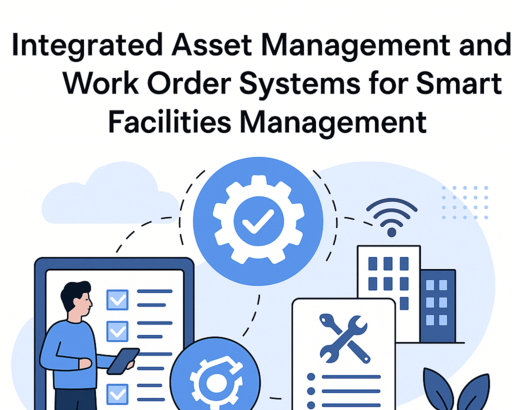
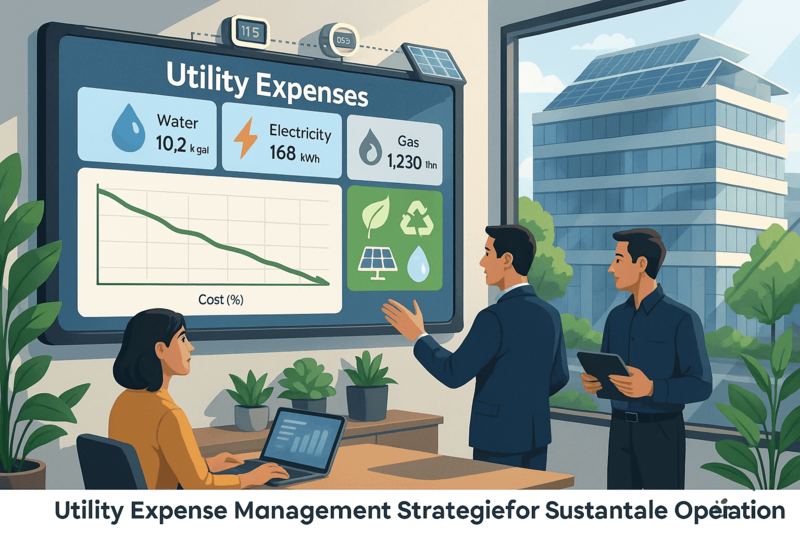


.png)




.png)
















.jpeg)









